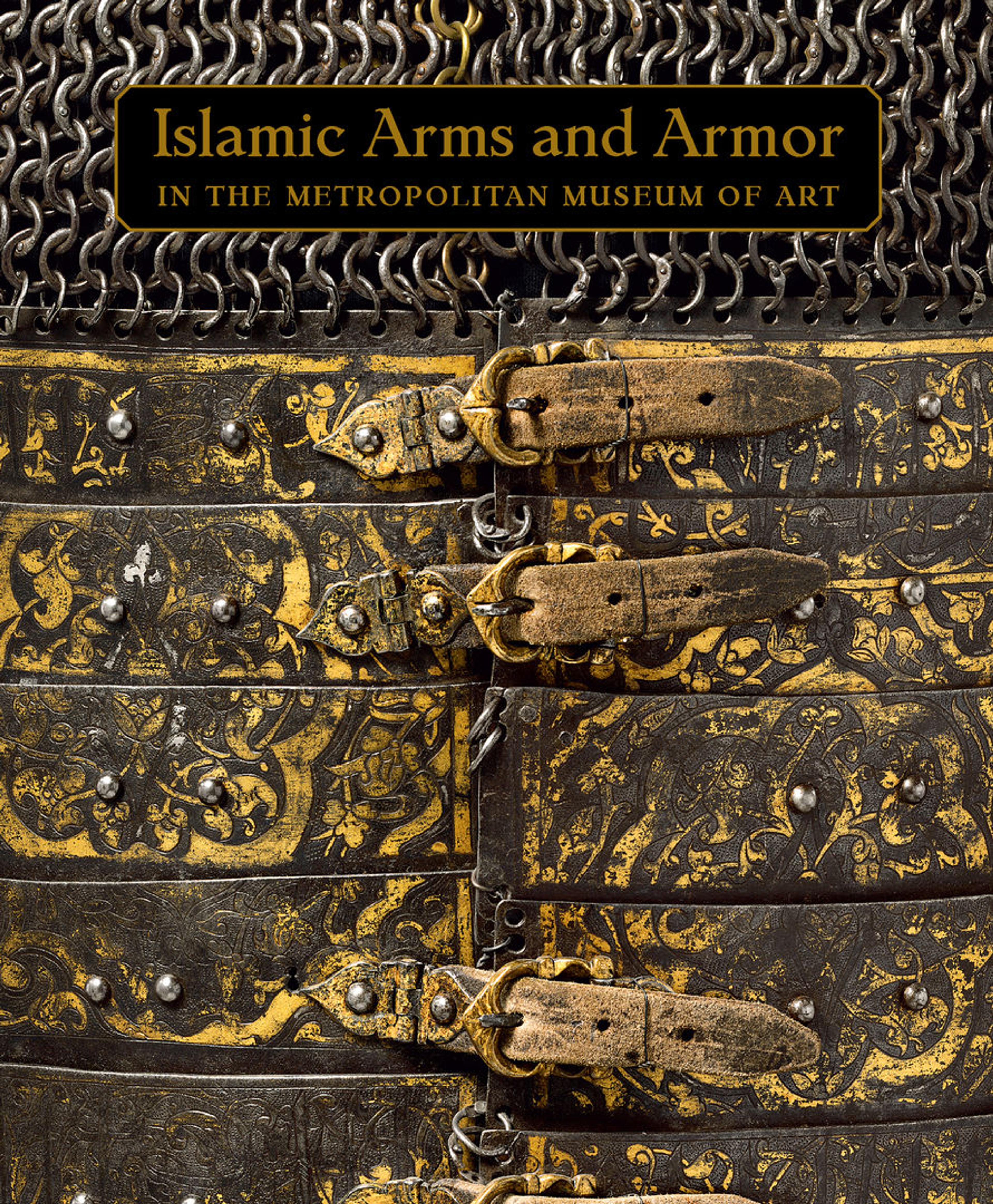Shirt of Mail and Plate
Mail shirts reinforced with steel or iron plates appear to have been developed first in Iran or Anatolia in the late fourteenth or early fifteenth century. Variations of mail-and-plate armor were worn subsequently throughout the Middle East by the Persians, Ottomans, and Mamluks. The style probably was introduced into India early in the Mughal period due to Ottoman influence on Mughal military practices.
The armor is part of a large group of material that comes from the armory of the maharajas of Bikaner in Rajastan, northern India. An inscription inside one of the plates gives the name of Maharaja Anup Singh (reigned 1669–98) and the date samvat 1748 (A.D. 1691–2). Anup Singh was a general in the armies of the Mughal emperor Aurangzeb and led a series of campaigns in the Deccan in the 1680s and 1690s, including battles at Golconda in 1687 and Adoni in 1689. The date on the armor indicates that it must have been taken as booty during one of the Deccan campaigns.
The armor is part of a large group of material that comes from the armory of the maharajas of Bikaner in Rajastan, northern India. An inscription inside one of the plates gives the name of Maharaja Anup Singh (reigned 1669–98) and the date samvat 1748 (A.D. 1691–2). Anup Singh was a general in the armies of the Mughal emperor Aurangzeb and led a series of campaigns in the Deccan in the 1680s and 1690s, including battles at Golconda in 1687 and Adoni in 1689. The date on the armor indicates that it must have been taken as booty during one of the Deccan campaigns.
Artwork Details
- Title:Shirt of Mail and Plate
- Date:17th century
- Geography:Probably Vijayapur, Karnātaka
- Culture:Indian, Deccani, probably Vijayapur
- Medium:Steel, iron
- Dimensions:H. 35 5/8 in. (90.5 cm); laid out flat with sleeves extended W. 78 in. (198.1 cm); Wt. 25 lb. 10 oz. (11.61 kg)
- Classification:Armor for Man
- Credit Line:Purchase, Arthur Ochs Sulzberger Gift, 2000
- Object Number:2000.497
- Curatorial Department: Arms and Armor
More Artwork
Research Resources
The Met provides unparalleled resources for research and welcomes an international community of students and scholars. The Met's Open Access API is where creators and researchers can connect to the The Met collection. Open Access data and public domain images are available for unrestricted commercial and noncommercial use without permission or fee.
To request images under copyright and other restrictions, please use this Image Request form.
Feedback
We continue to research and examine historical and cultural context for objects in The Met collection. If you have comments or questions about this object record, please contact us using the form below. The Museum looks forward to receiving your comments.
